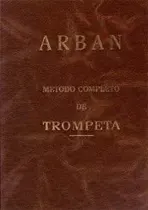How did Clave de Mi come about?
Clave de Mi is an ambitious project that started simply with the idea of taking advantage of the playback of MIDI files… but let’s go to the beginning of everything…
MIDI as a study tool
Now speaking in the first person, this idea was accompanied by the way of working that we have in the bands where I have played as an amateur, and it is the possibility of being able to listen to the scores and that they serve as a guide when studying them, improving a lot. the time it took to release new songs.
The ideal was always to lower the tempo of the voice in question to a speed at which we could interpret it, and from there, increase the tempo until reaching the level required by the score.
Trumpet ARBAN Method
Seeing the good results that this way of working gave, we thought of not only leaving it here, but extrapolating it to trumpet methods, where we could improve technically but with control, and that’s where the first idea of digitizing trumpet method scores arose.
During the end of 2020 and in the middle of the pandemic, we decided to start with one of the most complete trumpet methods out there: the ARBAN method, which consists of more than 500 exercises. To do this, once digitized, it was converted to MIDI format so that it could be imported into any player, and could help when interpreting the exercises for the trumpet world.

Trumpet MIDI
The idea worked well, so we decided to extend it to the rest of the trumpet methods: Clarke, Stamp, Bai Lin, etc… obtaining a large collection of practically the most used trumpet methods in music education.
However, analyzing the potential of this, two problems arose that we wanted to solve:
We needed third party tools to be able to play the MIDI.
The world of the trumpet was small and the idea had to be extended to more instruments.
Clave de Mi is born
In order to satisfy these two inconveniences, at the end of 2021 we contacted different musicians, conservatories and music schools to tell them about this initiative, seeing a great reception by most of them.
To do this, our work was now based on two tracks:
- Create a player as efficient as possible. In other words, we didn’t need 80% of the functionalities of the music editors, since what we were looking for was to reproduce the digitized scores, not to edit them. On the other hand, we needed other functionalities that these editors/players did not have, or if they did, they were not functions that a student without knowledge could perform… we wanted that with a click you could change the key, raise an octave or change the pitch. sounding instrument.
- Create a large database with, for the moment, those methods and exercises most used in conservatories and music schools, for which we have contacted both them and other musicians who help us to digitize the more content the better.
However, we did not want to settle for just this. We wanted to make a perfect tool, where the student would have everything they need to work on a daily basis, and that is where the idea arose of not only having a database of exercises and an adaptable player, but also for the tool itself to guide the student in their day to day, keeping statistics and analyzing and advising the student what to do every day.
Present and future
Right now we are in the middle of a pilot project that will come to light in the third quarter of 2022, with more than 2,000 exercises already digitized.
In addition, we have a fully functional player and a study guide that is still under construction, but which promises to make this application essential for any student.
From here it will be the community of musicians that determines where we want to go, since in the end, what we are looking for is nothing more than what the musician needs in his day to day life.







